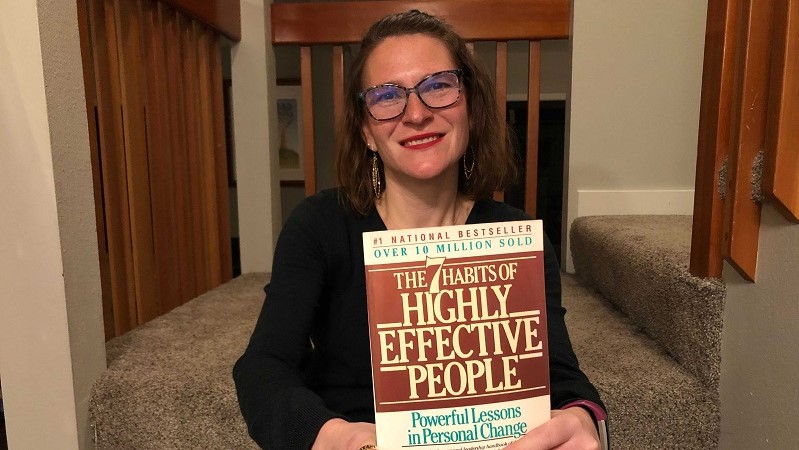You may know this about me, but I am a creature of habit. Some habits are helpful, like my habit of making sure clothes aren’t inside out before they go in the laundry (since I’m the one who always does the folding). Other habits are more superficial, bordering on ridiculous, like having a certain outfit I always wear on airplanes. Most habits fall somewhere in between, and have just become part of my daily routine for one reason or another.

In particular, my favorite habit is one that began when I had children. We now sing the Shema together every night with them at bedtime and sing Modeh Ani upon waking up. This routine, done day after day, provides me with a way to verbalize my connection to both my children and our faith. It’s a nightly proclamation that there is a God, that God is one, and that we are connected to God.
Even though I’m a rabbi, I haven’t always been able to find that daily connection. In rabbinical school I prayed with a minyan at least once a day, and often three times a day, and while I loved the ritual that filled my senses, it didn’t always bring me a connection to God in the same way that seeing the ocean or going for a sunset walk did. However, I learned that simply having the ritual itself was enough of a connection, and “feeling it” every time was much less important. This idea begins in our Torah portion this week, Parshat Tetzaveh.
In Parshat Tetzaveh, God gives the commandments for what clothing the priests will wear, how they should be fashioned, and the materials that should be used in their fashioning. The priests are designated to wear special clothing that distinguishes them from others in the service of God. These clothes are meant to add an aura of holiness as they complete their work. Since these vestments and garments are to be used for such a unique purpose, God gives a special instruction regarding who is to make them.
The ritual part comes towards the end of the portion, when we receive the laws of the “regular burnt offering.” In Hebrew this is called the Olat haTamid, and it is the core of the sacrificial system. Twice a day a lamb was wholly burned on the altar. Needless to say, we’ve long since removed literal sacrifices from our worship, but when this ritual was put in place, it was a big step for the Israelites. Having a priest designated and a sacred altar prepared, the Israelites now finally had a physical way to connect with God twice a day.
The 19th century Orthodox rabbi Rav Kook suggests that until now, holiness was manifested only occasionally and sporadically in the world. Now that Israel has received the Torah, the world would know holiness on a regular, daily basis. The daily offering is the commandment to stop at least once a day and connect with God in whatever way you can. From daily minyan or a daily walk to a tight snuggle and Shema before bed, the parshah and our Torah remind us that it’s the act of doing that makes the habit.



